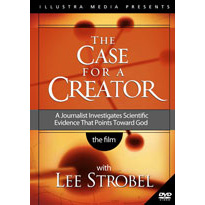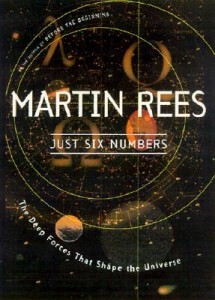“I Dare You” – Part One | Creation
As a Youth Pastor, I was always challenging my students to be able to articulate what they believe and why. It’s important to be able to clearly state what it is that shapes your perspective and determines your values, especially for a Christian. Otherwise, much of what a relationship with Christ brings to the table is never accessed due to an overly casual approach characterized by Biblical illiteracy and a secular mindset.
For me, I’ve got a collection of facts and truths that, taken together, form the basis of what compels me to embrace the cross and the efficacy of Scripture. And the more I study and the more I learn, the more compelling the substance of those Truths become.
Recently, it’s gotten to the point where some things that I’ve learned about creation inspired me to put some additional thoughts down on paper. The result was a “dare,” more or less, extended to those who either discount Christianity as an ornamental inconvenience or a system of myths that have somehow endured over the last 2,000 years.
It’s broken down into three sections: Creation, the Resurrection and Ambition. Each segment brings to the surface a body of empirical evidence that makes it very hard to maintain the posture of a cynic. In short, I dare you to not believe…
II) Creation
Romans 1:20 says, “For since the creation of the world God’s invisible qualities—his eternal power and divine nature—have been clearly seen, being understood from what has been made, so that men are without excuse.”
While some want to view creation as a cosmic accident that just happened to land in a good place, science and mathematics testify to something very intentional.
 In his book, “The Case For Creation,” Lee Strobel interviews Dr. Robin Collins, who has degrees in both mathematics and physics from Washington State University as well as a doctorate in physics from the University of Texas in Austin. After serving as a postdoctoral fellow at Northwestern University, he has spent the last decade doing research, writing, and teaching at Messiah College where he is currently serving as an associate professor of philosophy. At one point in the interview, he says:
In his book, “The Case For Creation,” Lee Strobel interviews Dr. Robin Collins, who has degrees in both mathematics and physics from Washington State University as well as a doctorate in physics from the University of Texas in Austin. After serving as a postdoctoral fellow at Northwestern University, he has spent the last decade doing research, writing, and teaching at Messiah College where he is currently serving as an associate professor of philosophy. At one point in the interview, he says:
Over the past thirty years or so, scientists have discovered that just about everything about the basic structure of the universe is balanced on a razor’s edge for life to exist. The coincidences are far too fantastic to attribute this to mere chance or to claim that it needs no explanation. The dials are set too precisely to have been a random accident. Somebody, as Fred Hoyle quipped, has been monkeying with the physics.1
An aggressive invitation to consider the practical Truth of Scripture
The bottom line is that while some will theorize how life was initiated apart from an Intelligent Designer, they do so in a way that requires a certain precision to be in place that cannot be explained. While there are several examples of the “precision” that needs to be in place in order for life to exist, the cosmological constant is especially compelling.
A) Cosmological Constant
The cosmological constant is a mathematical value assigned to what astronomers call “dark energy.”
When you look at the universe, you see things moving in a way that doesn’t make sense in that they’re things are being pushed and pulled around despite the fact that there is nothing around them. In other words, when you see a moon orbiting a planet, that makes sense because the planet has a gravitational pull that maintains that moon’s trajectory. But there are objects in space that are moving as though they’re being influenced by a gravitational force, yet there’s nothing visible to provide that force. Hence the term “dark energy” was coined to describe the obvious force being exerted upon these objects by seemingly invisible entities.
Fact is, this dark energy accounts for over 70% of our universe. And what makes that significant is that if this dark energy was characterized by a gravitational dynamic that was pulling everything in, then the universe would ultimately collapse on itself and life in general would cease to exist. If, on the other hand, this dark energy wielded a gravitational force that was too weak to temper the way in which our universe is expanding, then our solar system would unravel as would the entire cosmos.
This, then, is the cosmological constant: The value assigned to this force that continues to allow the universe to expand and therefore not collapse on itself, yet not spin out of control.
Initially, astronomers believed that the cosmological constant was very large. After all, you’re going to need a big broom to move planets around. But that is not the case. The cosmological constant is actually very small. How small? One part in a hundred million billion billion billion billion billion. That’s a ten followed by fifty three zeroes.
Contemplate the precision of that number. And if you move the dial or change the settings in even the most incremental way, the end result is something that no longer sustains life because of the way the universe would either collapse or unravel.
B) These Are Not Random Processes
I’ve read several arguments proposed by people who want to eliminate the need for a Designer. They’ll argue that there are natural processes in place that allow for evolution. The problem with their argument is that they don’t attempt to explain the origin of those processes. They simply point to the way in which things could conceivably flow, without explaining how that flow was initiated.
Dr. Ian Musgrave is a Senior Lecturer at the University of Adelaide in Australia. He has a website called talkorigins.org and his arguments are obviously very well thought out and substantially reinforced with his academic credentials. In his article “Lies, Damned Lies, Statistics and Probability of Abiogenesis Calculations” he offers a very credible sounding rebuttal to the often quoted impossibility of an enzyme forming by chance.
He proposes that the theory of life being able to start by itself should not be based on the formation of enzymes; rather it should be analyzed according to the construction of much simpler life forms. He suggests that the attention should be focused on the manufacturing of monomers or polymers – something that can be arrived at in a way that doesn’t involve the sort of mind numbing probability values associated with the fortuitous appearance of an enzyme.
At the beginning of his argument, he says “Firstly, the formation of biological polymers from monomers is a function of the laws of chemistry and biochemistry, and these are decidedly not random.” I would agree. These are not random processes. But the fact that it’s not random necessitates structure and order – dynamics that do not and cannot appear apart from being intentionally established by a Designer. It’s almost comical that he’s so dogmatic about how a simple life form can develop as a result of the chemical and biochemical laws that naturally exist, yet he doesn’t attempt to account for how those laws came about to begin with.
Stephen Hawking is a very well known physicist and mathematician who retired in 2009 from his position as the Lucasian Chair of Mathematics at Cambridge University after 30 years. The position was once held by Sir Isaac Newton. In his most recent book, “The Grand Design” he challenges Newton’s belief that creation necessitates the work of God by saying, “Because there is a law such as gravity, the Universe can and will create itself from nothing. Spontaneous creation is the reason there is something rather than nothing, why the Universe exists, why we exist. It is not necessary to invoke God to … set the Universe going.”2
While you can’t help but be impressed with Hawking’s credentials and accomplishment, his theory seems fundamentally flawed right from the beginning in that he’s presuming the existence of gravity and from there builds his platform. But if there is no gravity, than he has no platform.
It seems to me that there are a great number of lettered individuals on both sides of the spectrum when it comes to explaining the origin of life. But the thing that tips the scales in favor of those who champion the idea of a Creator is that the individuals who passionately search for a plausible sounding explanation apart from God inevitably base their assumptions on complex processes that need to be present in order for their theories to work.
It would be like me standing in front of an ATM with a random debit card attempting to determine the correct PIN in order to access the accounts associated with that card. You could only speculate how long it would take me to figure out the correct sequence of digits, but let’s suppose I did. Could I walk away with whatever cash I was able to withdrawal and say that all that was required were the four numbers I happened upon? No. The numbers are secondary to the technology necessary to process those numbers. Yet, in many instances, this is what some of these brilliant individuals will do when it comes to postulating their theories pertaining to the origin of life. They’ll focus on the PIN and ignore the ATM. In other words, they’ll speculate as to how certain elements came into being, but will base their models on things that, while they are foundational to their theories, are either assumed without explanation or accounted for using a level of speculation that borders on something ridiculous.
My point is that if you start with nothing, you have no gravity, you have no chemical law, you have no physical property. Your starting point consists of absolutely nothing. Scientists who assert the possibility of any kind of life form appearing as a result of random processes require the presence of these processes which, according to Dr. Musgrave, are not random in and of themselves. Hence the need for an ordered structure even in the context of the mechanisms that produce theses lucky accidents of creation.
Another example of this would be Dr. Martin Rees who is an amazingly accredited astronomer that became professor of astronomy at Cambridge when he was in his thirties and has since accumulated several prestigious honors in the fields of Cosmology, Astronomy and Astrophysics.
He wrote a book entitled “Just Six Numbers” that identify six mathematical values that underlie the fundamental physical properties of the universe. He describes these numbers as being intricately choreographed, to the point where if they were altered “even to the tiniest degree,” he said, “there would be no stars, no complex elements, no life.”3
One writer summarized what Rees was saying by explaining it this way:
Dr. Rees is a spiritual skeptic, so rather than allow the facts to point to the most obvious conclusion as far as they’re having been put in place by a Designer, instead he asserts that our universe is but one of many universes that have been generated through the ages, ours just happens to be the one where the settings are calibrated correctly.
But even if what Dr. Rees is suggesting is true, you still have to have a process that’s producing these universes. You cannot effectively refute the need for an Intelligent Designer to explain any aspect of creation by proposing theories that necessitate an impetus that is ordered in any way, shape or form.
Dr. Robin Collins elaborated on that kind of practice in Strobel’s book when he said, “…the skeptic needs to invent a whole new set of physical laws and a whole new set of mechanisms that are not a natural extrapolation from anything we know or have experienced.”5
D) Mathematical Elegance
At the end of the day, when you make these kind of assertions that are inevitably contrary to everything we can observe in the physical universe, you no longer have science as much as you have metaphysics posing as a very weak brand of science. Yet it is not uncommon among those who would diminish those physical realities that showcase God’s handiwork. Consider the words of George Sim Johnson:
The bottom line is that the universe is exquisitely and intricately engineered to the point where the mere notion of it all coming together by chance is utterly ridiculous. The beauty and mathematical elegance of creation is so compelling in terms of the way it points to God, that to dismiss Him with theories that require massive probability values in order for them to be plausible is simply not reasonable.










Leave a Reply
Want to join the discussion?Feel free to contribute!